Classification Method for Chirp Spread Spectrum Communication Formats Based on Multi-Feature Fusion
-
摘要: 自动调制分类(AMC)在频谱监测和认知无线电中具有重要意义。近年来,Chirp扩频通信(CSS)由于其良好的抗干扰能力和稳健性得到了较大发展,但是对CSS信号的AMC方法却鲜有研究。针对这种情况,该文提出了一种基于多特征融合(MFF)的CSS信号调制分类方法,利用频谱和时频图特征融合学习并引入注意力模块来实现CSS信号调制识别。对11类CSS信号调制样式的仿真实验结果表明,该方法有优越的识别性能。Abstract: Automatic Modulation Classification (AMC) is essential for spectrum monitoring and cognitive radio. The Chirp Spread Spectrum (CSS) communication scheme could be developed remarkably due to its good anti-interference ability and robustness. However, research on the AMC of the CSS communication scheme is limited.Therefore, this paper proposes a CSS signal modulation classification method based on Multi-Feature Fusion (MFF) to enhance its recognition accuracy. This method which leverages spectrum and time-frequency map feature fusion learning and incorporates an attention module. The results of 11 types of CSS formats demonstrate that the proposed scheme exhibits superior recognition performance.
-
表 1 1D-CNN模型的层数和每层的激活函数和输出维度
序号层名称 层结构参数 输入向量 维度:1×512 Conv1D+ReLU 输出维度:64×512 Dropout 正则化 丢弃率0.5 Conv1D+ReLU 输出维度:64×512 Dropout 正则化 丢弃率0.5 Conv1D+ReLU 输出维度:64×512 Dropout 正则化 丢弃率0.5 Flatten 输出维度:1×8192 Fc 输出维度:1×256 表 2 ResNet18模型参数描述
序号层名称 层结构参数 输入向量 维度:3×64×512 Conv2D+ReLU 输出通道:64; size:(3,3); stride:1 ResBlock1 输出通道:128; size:(3,3); stride:2 ResBlock2 输出通道:256; size:(3,3); stride:2 ResBlock3 输出通道:512; size:(3,3); stride:2 ResBlock4 输出通道:512; size:(3,3); stride:2 AvgPool 输出维度:1×256 -
[1] O’SHEA T J, CORGAN J, and CLANCY T C. Convolutional radio modulation recognition networks[C]. 17th International Conference on Engineering Applications of Neural Networks, Aberdeen, UK, 2016. [2] O’SHEA T J and WEST N. Radio machine learning dataset generation with GNU radio[C]. Proceedings of the 6th GNU Radio Conference, Boulder, USA, 2016. [3] MENG Fan, CHEN Peng, WU Lenan, et al. Automatic modulation classification: A deep learning enabled approach[J]. IEEE Transactions on Vehicular Technology, 2018, 67(11): 10760–10772. doi: 10.1109/TVT.2018.2868698 [4] HUANG Sai, JIANG Yizhou, GAO Yue, et al. Automatic modulation classification using contrastive fully convolutional network[J]. IEEE Wireless Communications Letters, 2019, 8(4): 1044–1047. doi: 10.1109/LWC.2019.2904956 [5] HUYNH-THE T, HUA C H, PHAM Q V, et al. MCNet: An efficient CNN architecture for robust automatic modulation classification[J]. IEEE Communications Letters, 2020, 24(4): 811–815. doi: 10.1109/LCOMM.2020.2968030 [6] TU Ya, LIN Yun, HOU Changbo, et al. Complex-valued networks for automatic modulation classification[J]. IEEE Transactions on Vehicular Technology, 2020, 69(9): 10085–10089. doi: 10.1109/TVT.2020.3005707 [7] CHEN Yufan, SHAO Wei, LIU Jin, et al. Automatic modulation classification scheme based on LSTM with random erasing and attention mechanism[J]. IEEE Access, 2020, 8: 154290–154300. doi: 10.1109/ACCESS.2020.3017641 [8] LIANG Zhi, TAO Mingliang, WANG Ling, et al. Automatic modulation recognition based on adaptive attention mechanism and ResNeXt WSL model[J]. IEEE Communications Letters, 2021, 25(9): 2953–2957. doi: 10.1109/LCOMM.2021.3093485 [9] DONG Yihong, JIANG Xiaohan, CHENG Lei, et al. SSRCNN: A semi-supervised learning framework for signal recognition[J]. IEEE Transactions on Cognitive Communications and Networking, 2021, 7(3): 780–789. doi: 10.1109/TCCN.2021.3067916 [10] CHANG Shuo, HUANG Sai, ZHANG Ruiyun, et al. Multitask-learning-based deep neural network for automatic modulation classification[J]. IEEE Internet of Things Journal, 2022, 9(3): 2192–2206. doi: 10.1109/JIOT.2021.3091523 [11] WINKLEY M R. Chirp signals for communications[C]. Proceedings of IEEE WESCON Conference, Florida, USA, 1962: 14–17. [12] 冯金振, 郑国莘. Chirp-BOK-BPSK调制超宽带无线传输技术[J]. 应用科学学报, 2008, 26(2): 123–126. doi: 10.3969/j.issn.0255-8297.2008.02.003FENG Jinzhen and ZHENG Guoxin. Ultra-wideband wireless communication based on chirp-BOK-BPSK modulation[J]. Journal of Applied Sciences, 2008, 26(2): 123–126. doi: 10.3969/j.issn.0255-8297.2008.02.003 [13] ZHAO Qiming, ZHANG Qinyu, and ZHANG Naitong. Multiple chirp-rate modulation based on fractional fourier transform[C]. 2010 First International Conference on Pervasive Computing, Signal Processing and Applications, Harbin, China, 2010: 688–691. [14] 张楷涵, 王文俊, 伊锦旺, 等. 基于FRFT的Chirp-FSK水声扩频通信方法研究[J]. 声学技术, 2017, 36(6): 115–120.ZHANG Kaihan, WANG Wenjun, YI Jinwang, et al. Chirp FSK based on FRFT for underwater acoustic communication[J]. Technical Acoustics, 2017, 36(6): 115–120. [15] VANGELISTA L. Frequency shift chirp modulation: The LoRa modulation[J]. IEEE Signal Processing Letters, 2017, 24(12): 1818–1821. doi: 10.1109/LSP.2017.2762960 [16] HANIF M and NGUYEN H H. Slope-shift keying LoRa-based modulation[J]. IEEE Internet of Things Journal, 2021, 8(1): 211–221. doi: 10.1109/JIOT.2020.3004318 [17] AN Shixiang, WANG Hua, SUN Yiwei, et al. Time domain multiplexed LoRa modulation waveform design for IoT communication[J]. IEEE Communications Letters, 2022, 26(4): 838–842. doi: 10.1109/LCOMM.2022.3146511 [18] DE ALMEIDA I B F, CHAFII M, NIMR A, et al. In-phase and quadrature chirp spread spectrum for IoT communications[C]. GLOBECOM 2020 - 2020 IEEE Global Communications Conference, Taipei, China, 2020. [19] 江宇阳. 基于LFM的雷达通信共享信号性能研究[D]. [硕士论文], 华中科技大学, 2019.JIANG Yuyang. Performance study of LFM-based shared signal for radar and communications[D]. [Master dissertation], Huazhong University of Science and Technology, 2019. [20] 黄建训. 雷达通信信号一体化及其波束形成研究[D]. [硕士论文], 哈尔滨工程大学, 2020.HUANG Jianxun. Research on radar communication signal integration and beamforming[D]. [Master dissertation], Harbin Engineering University, 2020. [21] 杨卜镔. MSK-LFM雷达通信一体化中多普勒频移估计研究[D]. [硕士论文], 西安电子科技大学, 2021.YANG Bubin. Research on Doppler shift estimation in MSK-LFM radar communication integration[D]. [Master dissertation], Xidian University, 2021. [22] HAN Lubing, GAO Feifei, LI Zan, et al. Low complexity automatic modulation classification based on order-statistics[J]. IEEE Transactions on Wireless Communications, 2017, 16(1): 400–411. doi: 10.1109/TWC.2016.2623716 [23] HAZAR M A, ODABASIOGLU N, ENSARI T, et al. Performance analysis and improvement of machine learning algorithms for automatic modulation recognition over Rayleigh fading channels[J]. Neural Computing and Applications, 2018, 29(9): 351–360. doi: 10.1007/s00521-017-3040-6 [24] SATIJA U, MANIKANDAN M S, and RAMKUMAR B. Performance study of cyclostationary based digital modulation classification schemes[C]. 2014 9th International Conference on Industrial and Information Systems (ICIIS), Gwalior, India, 2014: 1–5. [25] WANG Chao, WANG Jian, and ZHANG Xudong. Automatic radar waveform recognition based on time-frequency analysis and convolutional neural network[C]. 2017 IEEE International Conference on Acoustics, Speech and Signal Processing (ICASSP), New Orleans, USA, 2017: 2437–2441. [26] ZHANG Hanjian, YU Lei, and XIA Guisong. Iterative time-frequency filtering of sinusoidal signals with updated frequency estimation[J]. IEEE Signal Processing Letters, 2016, 23(1): 139–143. doi: 10.1109/LSP.2015.2504565 [27] WOO S, PARK J, LEE J Y, et al. CBAM: Convolutional block attention module[C]. 15th European Conference on Computer Vision, Munich, Germany, 2018. [28] HE Kaiming, ZHANG Xiangyu, REN Shaoqing, et al. Deep residual learning for image recognition[C]. 2016 IEEE Conference on Computer Vision and Pattern Recognition (CVPR), Las Vegas, USA, 2016: 770–778. [29] SIMONYAN K and ZISSERMAN A. Very deep convolutional networks for large-scale image recognition[C]. 3rd International Conference on Learning Representations, San Diego, USA, 2015. [30] KULIN M, KAZAZ T, MOERMAN I, et al. End-to-end learning from spectrum data: A deep learning approach for wireless signal identification in spectrum monitoring applications[J]. IEEE Access, 2018, 6: 18484–18501. doi: 10.1109/ACCESS.2018.2818794 -





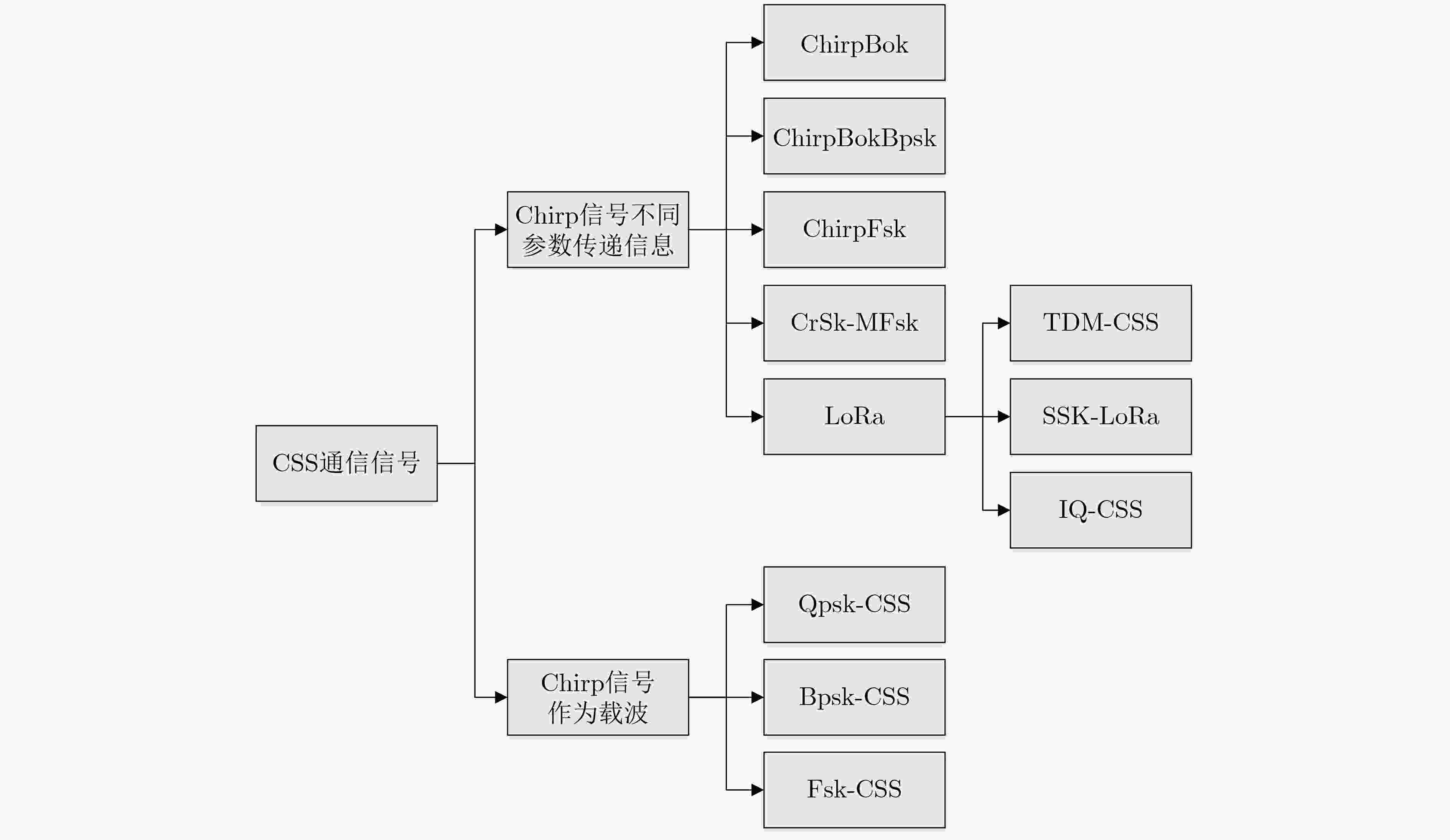
 下载:
下载:






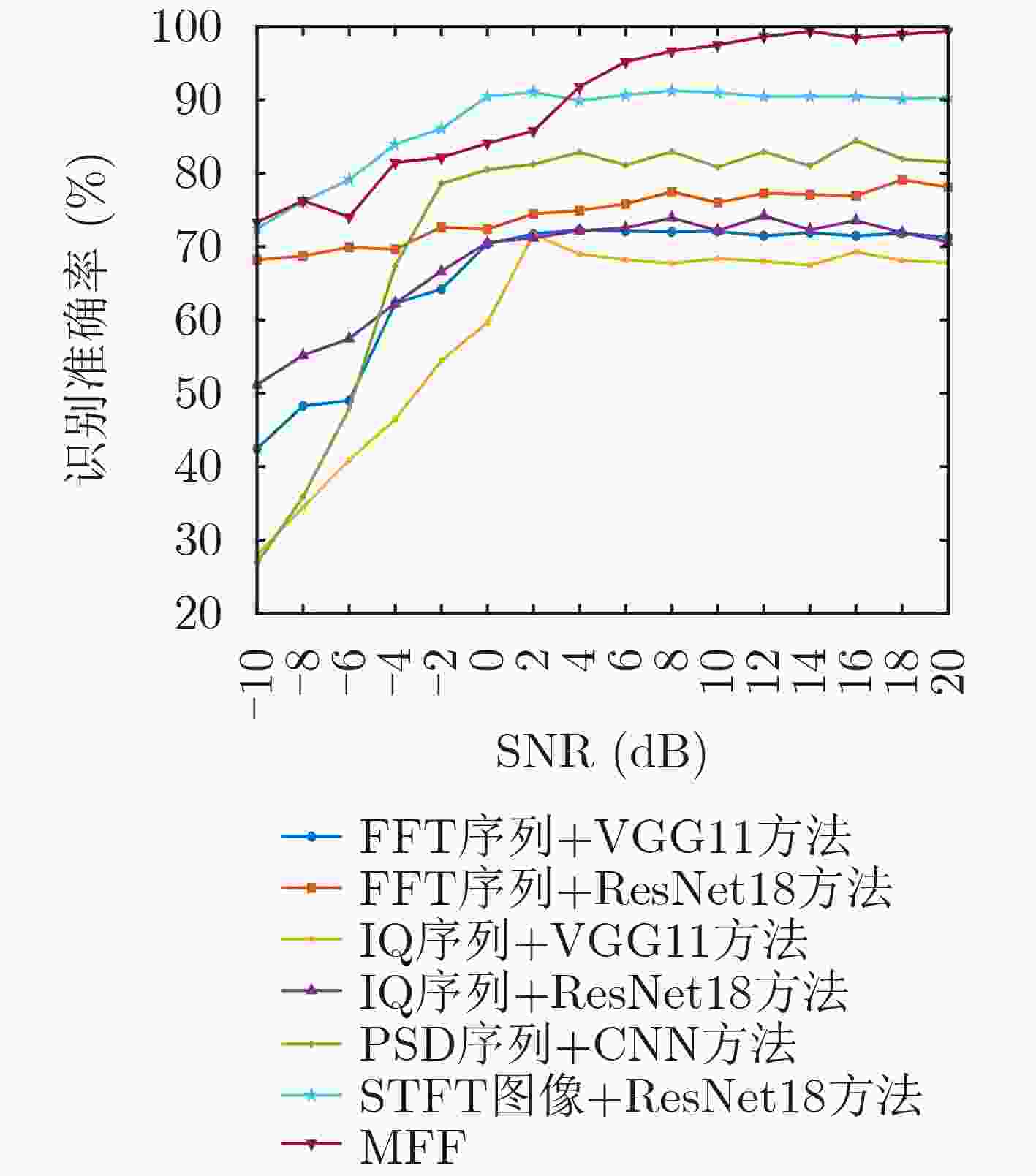
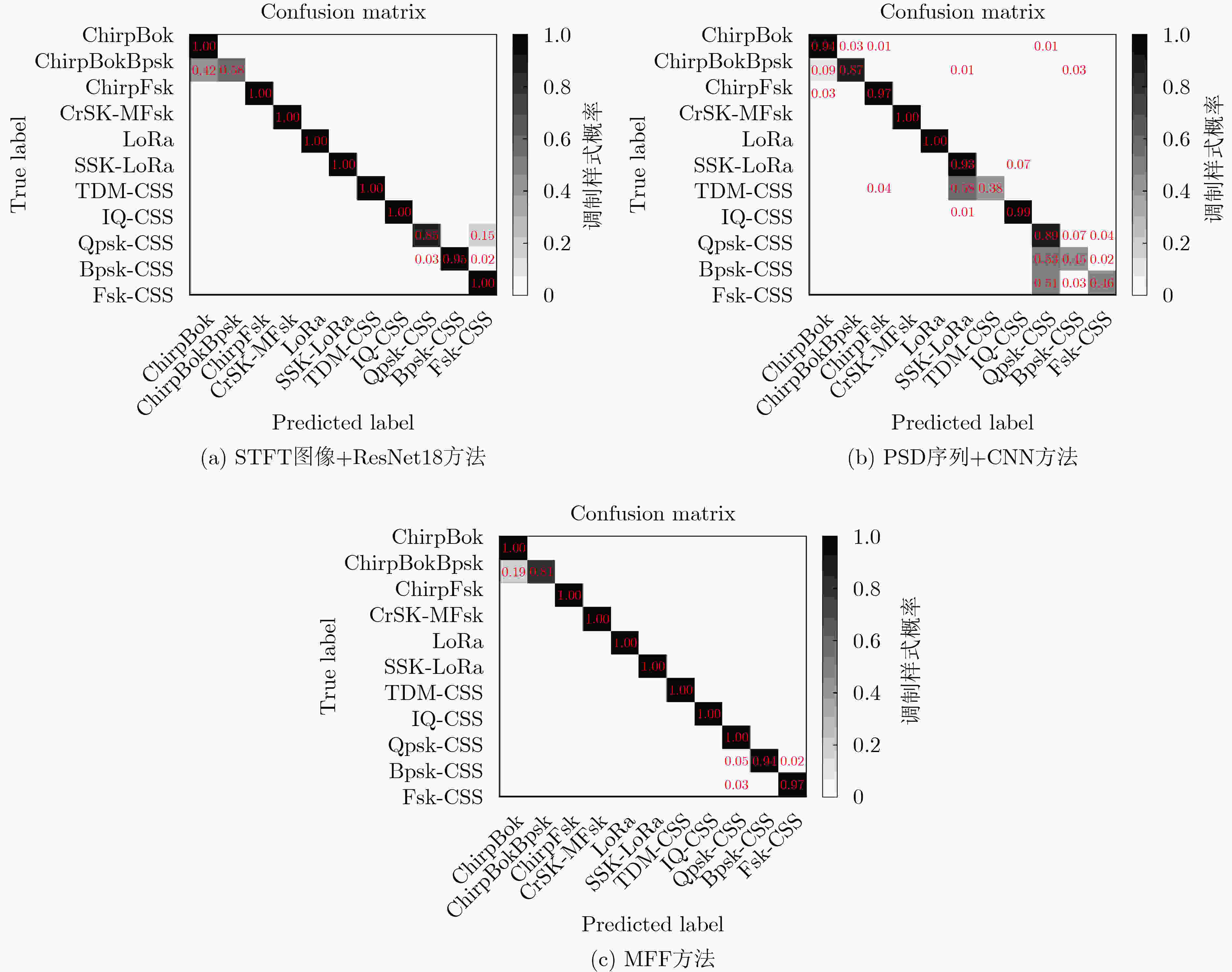
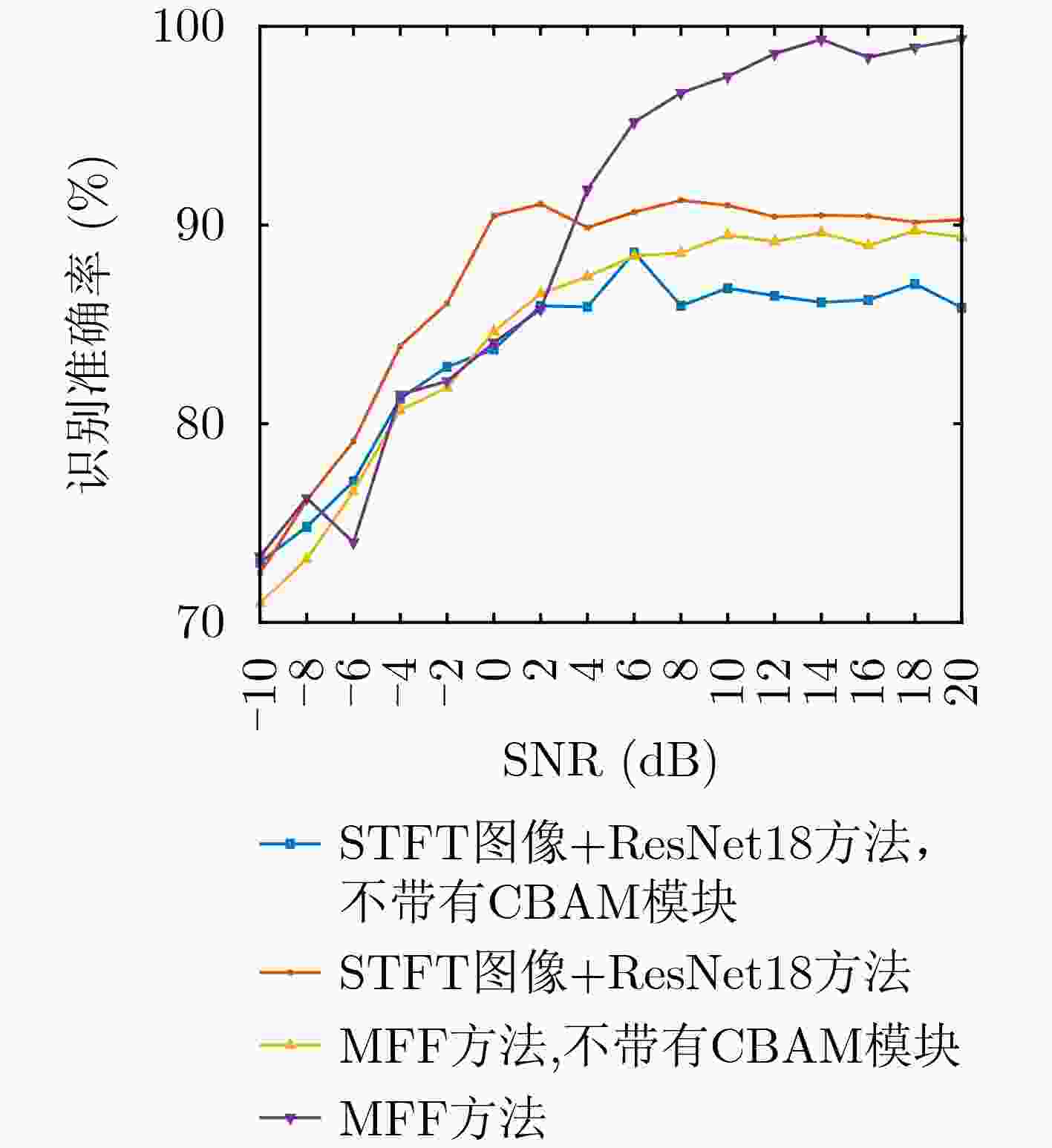
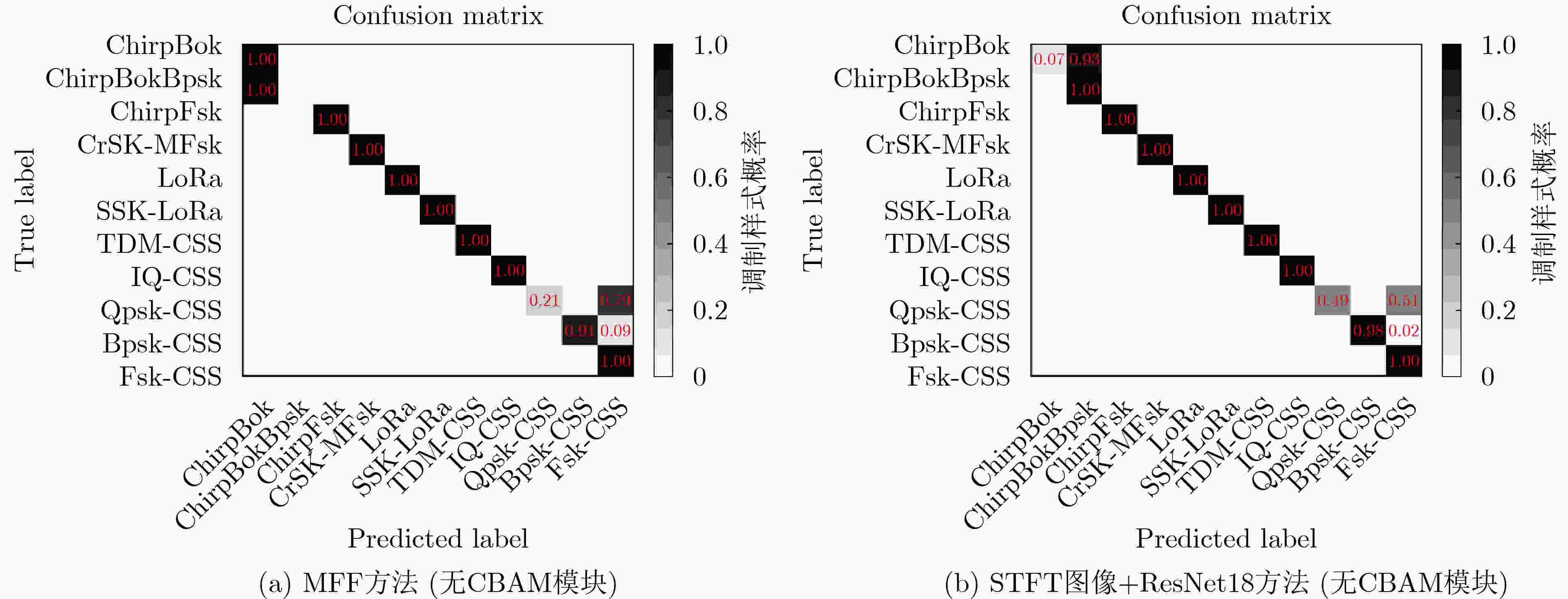

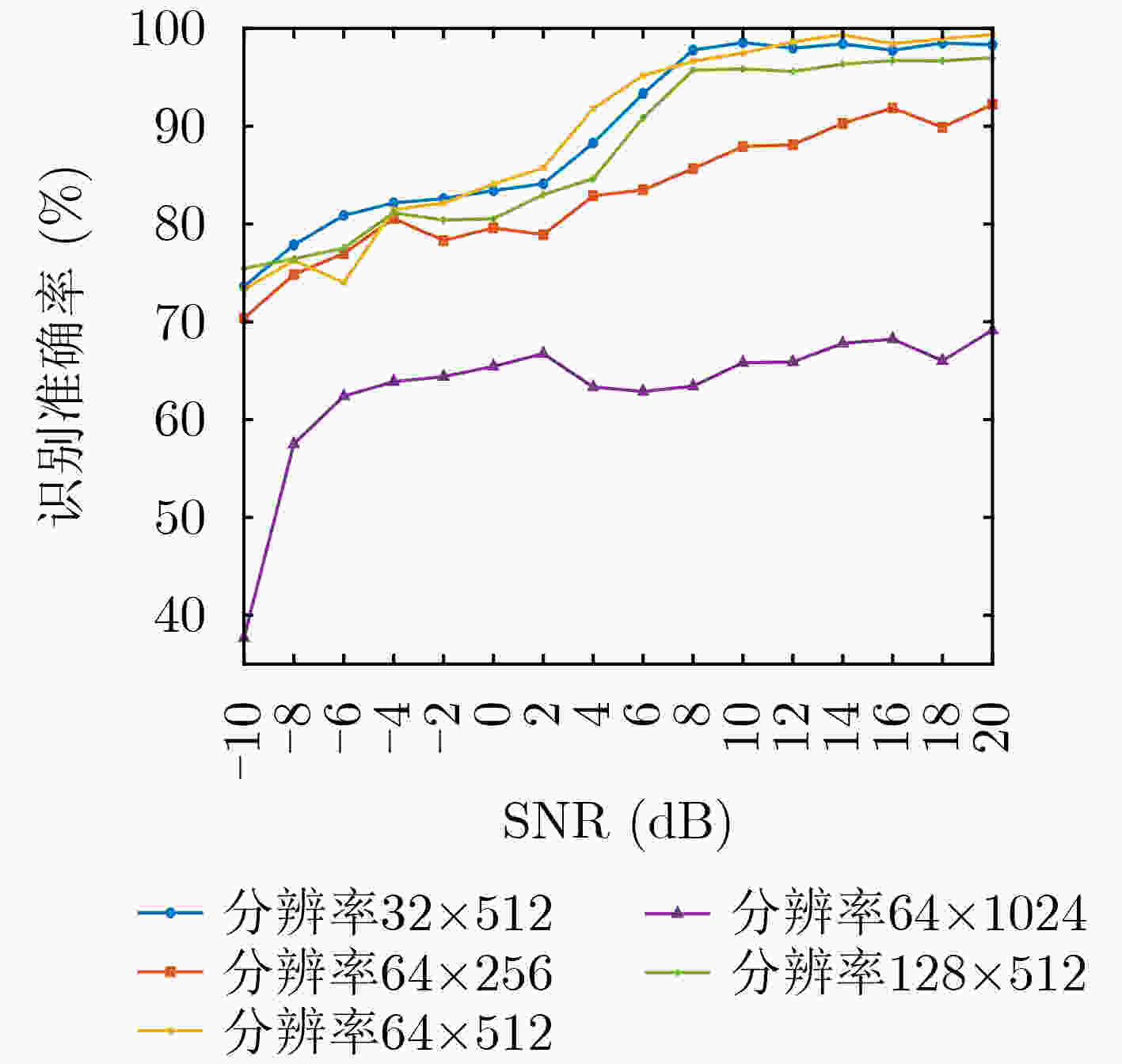
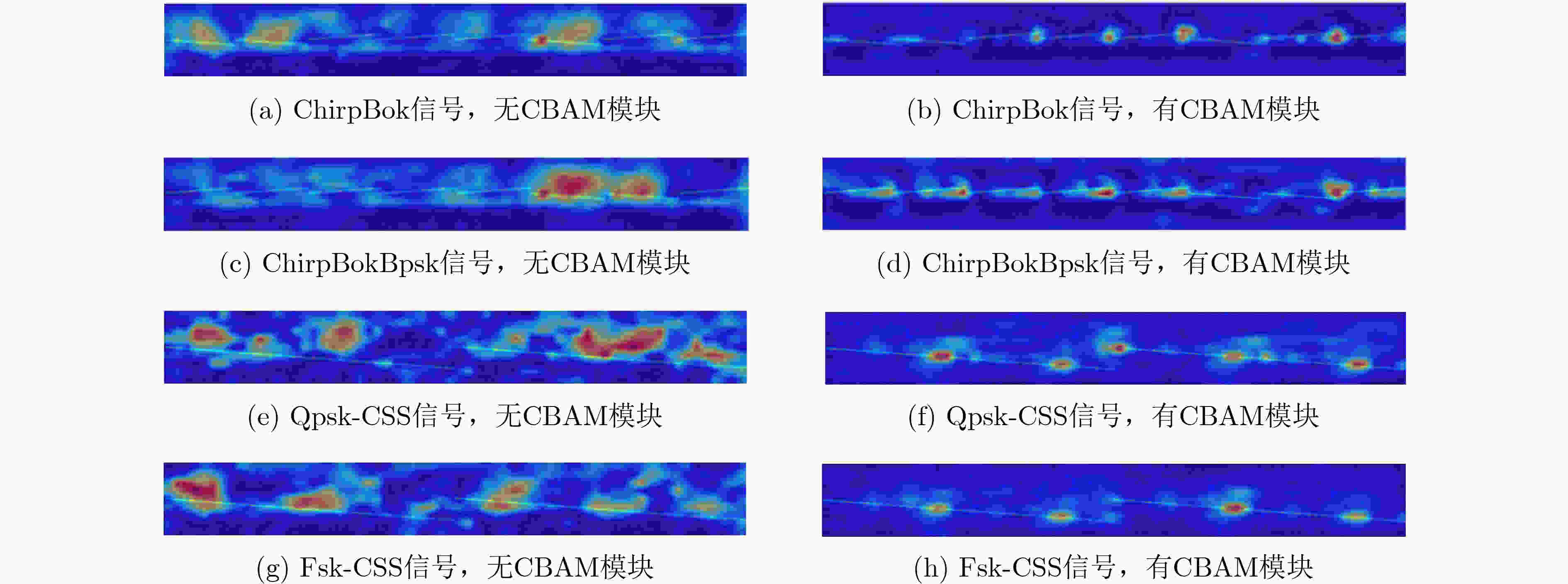


 下载:
下载:
